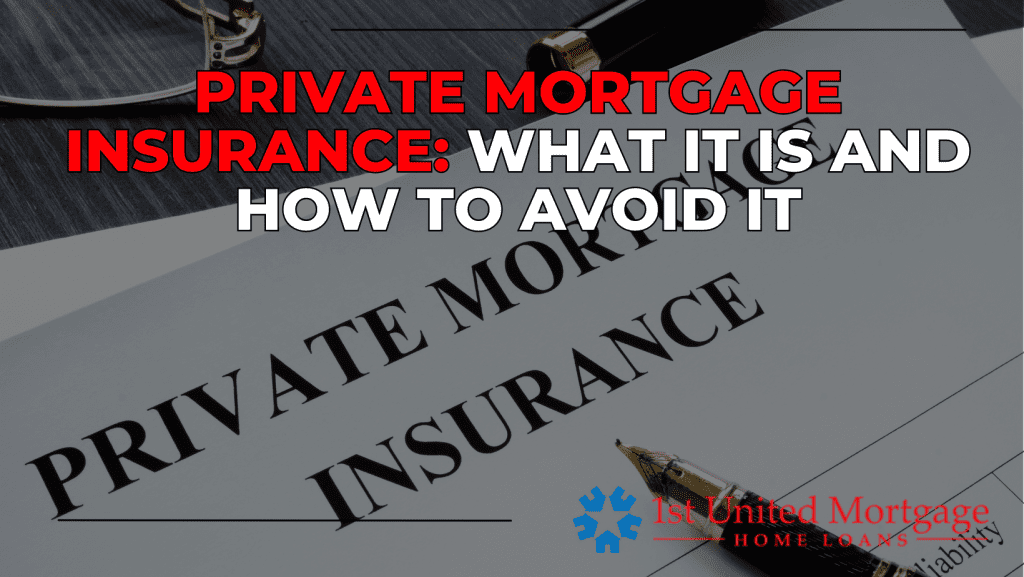
When buying a home with less than a 20% down payment, most conventional loan borrowers will encounter Private Mortgage Insurance (PMI). While PMI can make homeownership accessible sooner, it comes with added costs that many borrowers prefer to avoid. In this blog, we’ll delve into what PMI is, how it works, and strategies to avoid it.
What is Private Mortgage Insurance (PMI)?
PMI is a type of insurance designed to protect lenders against potential losses if a borrower defaults on their mortgage. Unlike other insurance policies, PMI does not protect the homeowner; it solely benefits the lender. PMI becomes necessary when a borrower cannot make a down payment of at least 20% of the home’s purchase price.
How PMI Works
PMI is typically required for conventional loans with down payments of less than 20%. It is also applicable in some refinancing scenarios where the homeowner’s equity is below 20%. Here’s a closer look at how PMI payments can be structured:
- Monthly Premiums: The most common PMI payment method, where the premium is added to the monthly mortgage payment.
- Up-front Premium: A one-time payment made at closing, which might not be refundable if the borrower moves or refinances.
- Combination of Up-front and Monthly Premiums: Some lenders offer a combination of both, where part of the premium is paid upfront, and the rest is added to monthly payments.
How to Pay for PMI
Before finalizing your mortgage, ask your lender about the PMI options available. Understanding the costs and benefits of each method will help you make an informed decision. For example:
– Monthly Premiums: These are convenient and spread the cost over the loan term but will increase your monthly payments.
– Up-front Premiums: Pay this at closing to avoid monthly PMI payments, but consider the risk of non-refundable premiums if you move or refinance.
Strategies to Avoid PMI
While PMI can help you purchase a home without a 20% down payment, avoiding it can save you money. Here are some effective strategies:
Make a 20% Down Payment
The most straightforward way to avoid PMI is by making a 20% down payment. This not only eliminates the need for PMI but also reduces your monthly mortgage payment and may qualify you for a lower interest rate. However, ensure you retain enough savings for home maintenance, furnishing, and emergency expenses.
Consider a Higher Interest Rate
Some lenders offer “no PMI” loans by covering the insurance themselves. In return, they charge a higher interest rate. Known as lender-paid mortgage insurance, this option might be more cost-effective over time, depending on your specific financial situation and how long you plan to stay in the home.
80-10-10 Loans
An 80-10-10 loan, or piggyback loan, involves two loans: one for 80% of the home’s price and another for 10%, combined with a 10% down payment. This structure avoids PMI but requires you to qualify for two loans. It’s ideal for those with strong credit and sufficient income.
VA Loans for Veterans and Active Military
VA loans, available to veterans, active-duty military, and eligible spouses, do not require PMI. Instead, they come with a one-time funding fee, making them an attractive option for eligible borrowers.
USDA Loans for Rural Buyers
USDA loans are zero-down mortgages for low- to moderate-income buyers in designated rural areas. While they don’t require PMI, they do have upfront and annual fees. Checking eligibility for a USDA loan could be beneficial if you’re considering a rural or suburban home.
Special Loans for Medical Professionals
Some lenders offer special mortgage programs for medical professionals like doctors, dentists, and orthodontists. These often feature low or no down payments and do not require PMI, considering the typically high but deferred income of these professionals.
State Housing Finance Agency Programs
State housing finance agencies may offer programs with reduced or no PMI requirements, particularly for first-time homebuyers. Check with your state agency for specific programs and eligibility requirements.
Canceling PMI
If you can’t avoid PMI initially, plan to cancel it as soon as possible. PMI is automatically terminated when your mortgage balance reaches 78% of the home’s original value, or you reach the halfway point of your loan term. However, you can request cancellation earlier if your loan balance drops to 80% of the home’s value, possibly via an appraisal showing increased home value.
Navigating the complexities of PMI can seem daunting, but with strategic planning and informed decisions, you can minimize or avoid these extra costs. At 1st United Mortgage, we’re dedicated to helping you find the best mortgage solution tailored to your needs. Contact us today at (931) 548-1985 or visit our website to explore your options and get started on your journey to homeownership.
